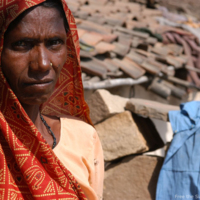
Four years ago my wife had severe pain in her abdomen and the local doctor advised us to consult a doctor in the city. I had no money for my wife’s treatment so I took a loan from the slave owner after being advised to do so by some of our relatives. Just after my wife returned from the hospital the slave owner and his henchmen caught us from our home. They put us in the brick kiln with our 3 children where we all worked 12-15 hours everyday. We got Rs 200 (about $2.80) per week and that amount was not even sufficient for food of entire family. We were living very terrible life in the brick kiln. We were illiterate and weren’t able to calculate our wages. One evening Schools4Freedom team members came to the brick kiln and listened to our story. They helped me to negotiate with the slave owner. I got my due wages back with the support of S4F team members.
We returned home safely.
Narrative provided by Voices4Freedom
Narrative can be found here









